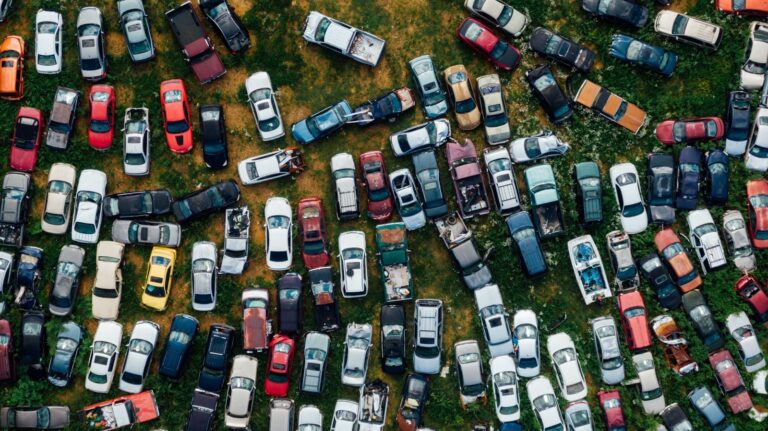While it may appear that your auto insurance premium has increased for no apparent reason, a closer examination will reveal that there was a rationale for the increase. It’s possible that you aren’t aware of it since the reason isn’t evident.
Here are some of the reasons your auto insurance rate can go up.
Your Car’s Make and Model
The cost of insuring various types of vehicles varies. This is because some automobiles have more safety mechanisms than others, and people driving in cars with more excellent safety features have fewer severe bodily injury claims and, as a result, require less medical attention.
Additionally, the drivers may have fewer accidents with these features because they help prevent accidents. However, repair costs may be higher if safety elements are compromised. If you’re considering acquiring a new automobile, ask your insurance agent and see how that car model may affect your insurance premium.
Your Driving History
Your driving record contains a history of moving traffic offenses and accidents you were at fault. It’s among the essential criteria in determining your vehicle insurance premiums.
Depending on your state, car insurance providers examine your driving record for the previous three to five years. Expect to pay extra for auto insurance if you’ve been in a car accident or earned traffic fines.
You may have difficulty acquiring insurance coverage if you have a history of at-fault accidents, traffic tickets, and a DUI/DWI record. This is because it’s practically impossible to find Insurance Companies That Don’t monitor your driving history. If insurance firms refuse to insure you, you may be forced to purchase non-standard automobile insurance designed for “high-risk” drivers. You might also acquire automobile insurance through your state’s allotted risk pool as a last option.
The good news is that you can try to improve your driving record right away, no matter what it says. It pays to practice safe driving practices and prevent infractions such as speeding fines and accidents.
Teen Driver Coverage
The prices will be affected if you add somebody to your vehicle coverage. If you add a teen driver to your insurance, your monthly rates may increase.
According to research by the National Institutes of Health and the Virginia Transportation Institute, youths experience more collisions in their first six months of driving alone than in their subsequent year of driving.
The number of accidents teens have on the road decreases as they gain experience. Despite this, teenagers are more expensive to insure since they are statistically more likely to be involved in auto accidents.
Insurance History for Your Vehicle
Be ready to pay a higher price if you are a new driver. This is because car insurance companies will have little information to assess your risk. Auto insurance rates can also increase if you have a “coverage gap.” This is a phase in which you are without automobile insurance.
For instance, if your automobile insurance was terminated due to non-payment or when you switched cars and did not have coverage. Insurers consider coverage gaps to be a higher risk, which results in higher insurance rates.
Non-owner vehicle insurance is a fantastic choice to keep continuous car insurance coverage if you don’t have automobile insurance but want to prevent a coverage gap.
Accidents and Transgressions
Sometimes, insurance rates increase after an accident or moving violation. Even if the accident was not their fault, the insured might be responsible. Accident Forgiveness is insurance coverage that some firms offer in some states.
If you choose this policy plan, your price won’t increase after your first at-fault accident. If a policyholder hasn’t had any accidents or infractions for a certain length of time, they may be eligible for a reduction on their vehicle insurance.
It’s also critical to safeguard yourself against becoming the victim of accidents caused by auto insurance scams. Insurance fraudsters will target inattentive drivers, so put your phone away, concentrate on the road, and maintain a safe space between you and the car ahead of you.
How to Lower Car Insurance Costs
- Compare prices – Each firm has its unique price structure. Comparing auto insurance quotes from various providers is the greatest approach to getting low prices. The top vehicle insurance providers provide excellent customer service at a reasonable cost.
- Learn defensive driving – You can profit from a state-approved defensive driving course in two ways. For starters, in some jurisdictions, it can assist remove any points you may have accrued on your driving record due to traffic violations, perhaps resulting in lower insurance premiums. Second, most insurance companies provide reductions to drivers who have taken a driver’s education course, particularly those aged 55 and above.
- Get a lower deductible – Your deductible should be as low as possible. By selecting a greater deductible, you can save money. It’s not a terrible idea to gamble on yourself if you’re a careful driver who avoids accidents.
Bottom line
Discounts and deductibles are the two best ways to lower car insurance premiums. Alternatively, you can also opt for other strategies such as telematics, which lets an insurer track your driving habits and reward you if they’re good ones.







